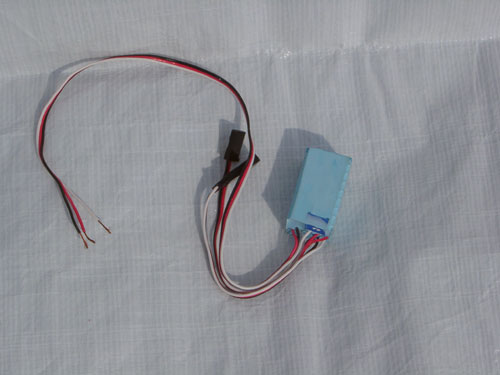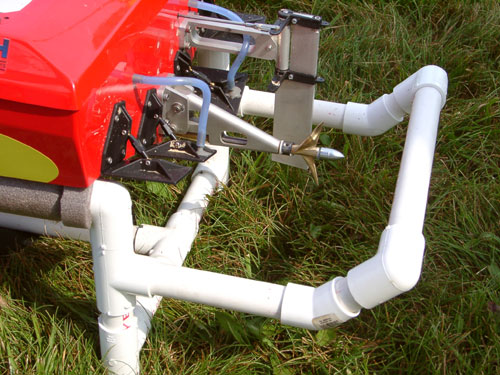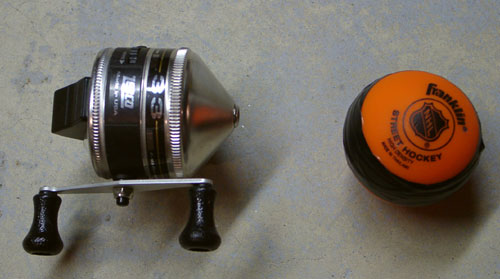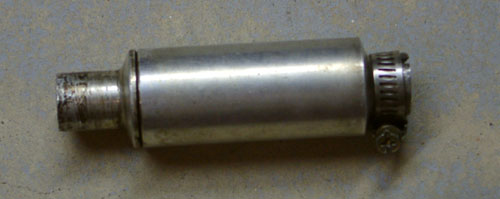Misc. Article ...by Brad Mahs

Some important safety tips...a must read for anyone joining the sport of R/C Boating...
While some boaters love to race, others are content to simply putt around with their scale model, or "run for fun" with friends. Whatever you prefer, one important issue remains the same: SAFETY!
Today's gasoline powered R/C boats are large, powerful, and very fast. With speeds often exceeding 40 mph, a model boat has the potential to cause tremendous damage to other full-sized watercraft, or seriously injure or kill people (swimmers and spectators). Attention to safety and responsible boat operation are critical issues.
Most racers are members of a national organization such as IMPBA or NAMBA, and have the luxury of running on maintained race sites, usually isolated from swimmers, full-sized boats, animals, and lake residents. However, the majority of R/C boaters are pleasure or fun boaters, many of whom run on public lakes, ponds and rivers that they share with other water sports enthusiasts. Here are some tips for running safe, regardless of where you use your boat.
Check your equipment
This may sound obvious, but if you maintain your equipment - take the extra time after each run to prepare for the next outing, and double-check everything before each trip to the pond - many "accidents" caused by equipment failure can be eliminated. Before heading for the water, check every bolt and screw for tightness. Verify that batteries are charged and all electrical connections are secure. Make sure your receiver antenna has a clear path up and out of the boat, with no kinks or cuts. Check all the water cooling lines and gas lines. Be sure the throttle and steering linkages are secure and free from binding.
Perform a radio range check
Never touch that pull cord without first performing a range check on your radio system! This is easiest if you have a friend along. Collapse your transmitter antenna, turn on the transmitter, and then turn on the receiver. Check the throttle and rudder servos for glitching. You should be able to walk a few yards away with the antenna collapsed without seeing any servo glitches . Now fully extend the transmitter antenna and walk away from the model. Have your friend keep an eye on the servos while you wiggle the steering and throttle controls. One should not affect the other's performance. Likewise, there should be no movement unless you are making inputs on your transmitter. You should try to walk as far away from the model as the farthest distance you are planning to run, if possible.
If you experience intermittent control, or get "ghost" servo movement, rule out any mechanical and electrical problems. If you still get glitching, you may be getting interference from nearby CB or other signals. You may have to switch to a different radio frequency, or in the worst case, you may have to abandon that day's run. The old saying, "It's better to be safe than sorry" definitely applies.
Radio System Fail-Safe
 Use a radio fail-safe system. A fail-safe will shut down or return the throttle servo to a predetermined setting if there is a loss in signal or if you experience unexpected interference. Some radio systems come with a fail-safe system built into the receiver. Often you will need to use a 3rd party fail-safe system. Shark Racing sells one that will kill the engine should battery failure occur as well.
Use a radio fail-safe system. A fail-safe will shut down or return the throttle servo to a predetermined setting if there is a loss in signal or if you experience unexpected interference. Some radio systems come with a fail-safe system built into the receiver. Often you will need to use a 3rd party fail-safe system. Shark Racing sells one that will kill the engine should battery failure occur as well.
Watch that prop!

When starting, launching and retrieving your boat, make sure other boaters and bystanders keep well away from the spinning prop. Especially children! They are usually enthusiastic about watching your boat run, and don't realize the danger of a sharp prop. A well-intentioned bystander who gets to close, stumbles and falls on the prop could wind up with some serious cuts, and you could be liable. Build a boat stand that has a prop guard. This will help prevent accidental run-ins with the prop when you are starting your boat on the stand.
Run in a clear area
NEVER run near swimmers, sunbathers or other full sized boaters. Try to find protected waters if at all possible. No matter how great the urge, DO NOT run your boat if there are people in the water. A simple mechanical problem or radio glitch could be fatal to an innocent swimmer. Additionally, an out of control boat can easily run up a beach or shore some distance. If there are spectators near the water's edge, ask if they could step back at least 20 feet. Regardless of where you run, consider joining either IMPBA or NAMBA. Both organizations have liability insurance. In the case of NAMBA, you are covered no matter where you run your boat (within the safety rules of NAMBA), while IMPBA insures you only at approved club sites. Check out www.NAMBA.com or www.IMPBA.net for details.
Never run on restricted waters
If signs say, "No gasoline engines allowed", that means you too! There's no faster way to give this great sport a black eye than to break rules.
Plan for a retrieval
 If your boat stalls or flips, never ever try to swim after it! Plan in advance for such an occurrence--buy an inexpensive one-man raft, use a tennis ball on a string, or use a rod and reel to cast a rubber ball across the boat and haul it back to shore safely. There are people every year who die while swimming due to cramps, fatigue, or hypothermia. Even the most physically fit person can become over-exerted and drown (especially if you misjudge the distance you have to swim).
If your boat stalls or flips, never ever try to swim after it! Plan in advance for such an occurrence--buy an inexpensive one-man raft, use a tennis ball on a string, or use a rod and reel to cast a rubber ball across the boat and haul it back to shore safely. There are people every year who die while swimming due to cramps, fatigue, or hypothermia. Even the most physically fit person can become over-exerted and drown (especially if you misjudge the distance you have to swim).
Keep it quiet
Use a muffler on your tuned pipe, or straight-pipe system. Numerous race sites have been lost due to excessive noise . This is probably the largest complaint most "non-boaters" have about our R/C hobby. It's also their greatest weapon to keep us off the lake. By taking an active stand and consciously reducing the Db level of our boats, we can all try to keep this hobby alive and growing.
. This is probably the largest complaint most "non-boaters" have about our R/C hobby. It's also their greatest weapon to keep us off the lake. By taking an active stand and consciously reducing the Db level of our boats, we can all try to keep this hobby alive and growing.
Never drink and drive
Alcohol and R/C don't mix, except at the end of the day when the boats are put away! No preaching here, just common sense. Enough said.
Remember, safety needs to be your greatest concern, from the moment you take your boat out of your vehicle, to the moment you place it back on your workbench at night.
Being conscientious about safety will allow you to enjoy your time on the water and have safe fun. And that's what it's all about!

